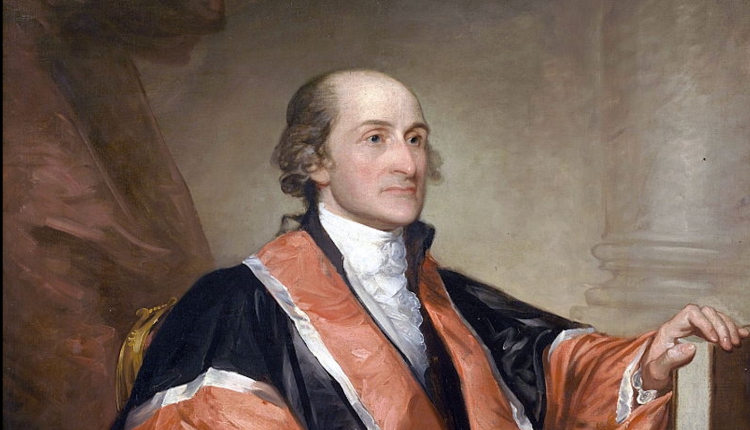Founding Father John Jay, a towering figure among the intellectual giants who forged the nation, was sworn in as first chief justice of the Supreme Court of the United States on this day in history, Oct. 19, 1789.
The New York native held the title until resigning in 1795, among the shortest tenures for the prestigious lifetime appointment.
Only 16 other people have held the title of Supreme Court chief justice in the 227 years since.
Leading the high court in its infancy was one of many incredible achievements by this Founding Father, a man whose contributions to the nation’s creation have been overshadowed through the years by several of his contemporaries.
ON THIS DAY IN HISTORY, OCTOBER 18, 1867, UNITED STATES PURCHASES ALASKA FROM RUSSIA FOR COOL $7.2 MILLION
“John Jay filled more high offices than any other Founding Father, including president of the Second Continental Congress, secretary of foreign affairs under the Articles of Confederation, and, most famously, the Supreme Court’s first chief justice,” wrote the National Portrait Gallery of the Smithsonian Institution in its praise of the foundational figure in American history.
“Washington saw Jay as unique in his superior virtue and objectivity and appointed him chief justice with great confidence in his qualifications,” added the National Portrait Gallery tribute.
President George Washington nominated Jay to the chief justice position on Sept. 24, after Jay first declined an offer to serve as first Secretary of State.
“John Jay filled more high offices than any other Founding Father.”
The Senate unanimously confirmed him on Sept. 26.
He took his two oaths, a judicial oath and a constitutional oath, as required of all Supreme Court justices, on Oct. 19 before Richard Morris, chief justice of the State of New York.
For more Lifestyle articles, visit www.foxnews.com/lifestyle
“As this was an inaugural position, many of Jay’s duties involved establishing rules, procedure and precedents,” writes ConstitutionFacts.com, a site run by Oak Hill Publishing, which calls itself “the worldwide leader in pocket Constitution books.”
“The most famous case he presided over was Chisholm v. Georgia (1793), most commonly associated with the introduction of judicial review. However, the court decision was later overturned by the ratification of the Eleventh Amendment.”
Jay, among his other great achievements, was one of three main authors of the Federalist Papers, along with Alexander Hamilton and James Madison.
“Washington saw Jay as unique in his superior virtue and objectivity.”
He helped negotiate — with John Adams and Ben Franklin — the Treaty of Paris of 1783, which formally secured recognition of American independence from the British crown and in the eyes of the world.
He was also a key early figure in the abolition movement.
“To contend for our own liberty, and to deny that blessing to others, involves an inconsistency not to be excused,” Jay wrote to a friend in 1786 in one of his more famous quotes.
ON THIS DAY IN HISTORY, SEPT. 27, 1779, JOHN ADAMS ASSIGNED TO LEAD PEACE TALKS WITH ENGLAND
Jay was just 49 years old when he resigned his position as chief justice on June 29, 1795.
“He became governor of New York in 1795, organized the New York Manumission Society and helped pass a gradual emancipation law in 1799 that led to the eventual end of slavery in New York in 1827,” reports George Washington’s Mount Vernon.
“Jay left the governorship of New York in 1801 to go into retirement, and passed away in 1829.”
Read the full article here

